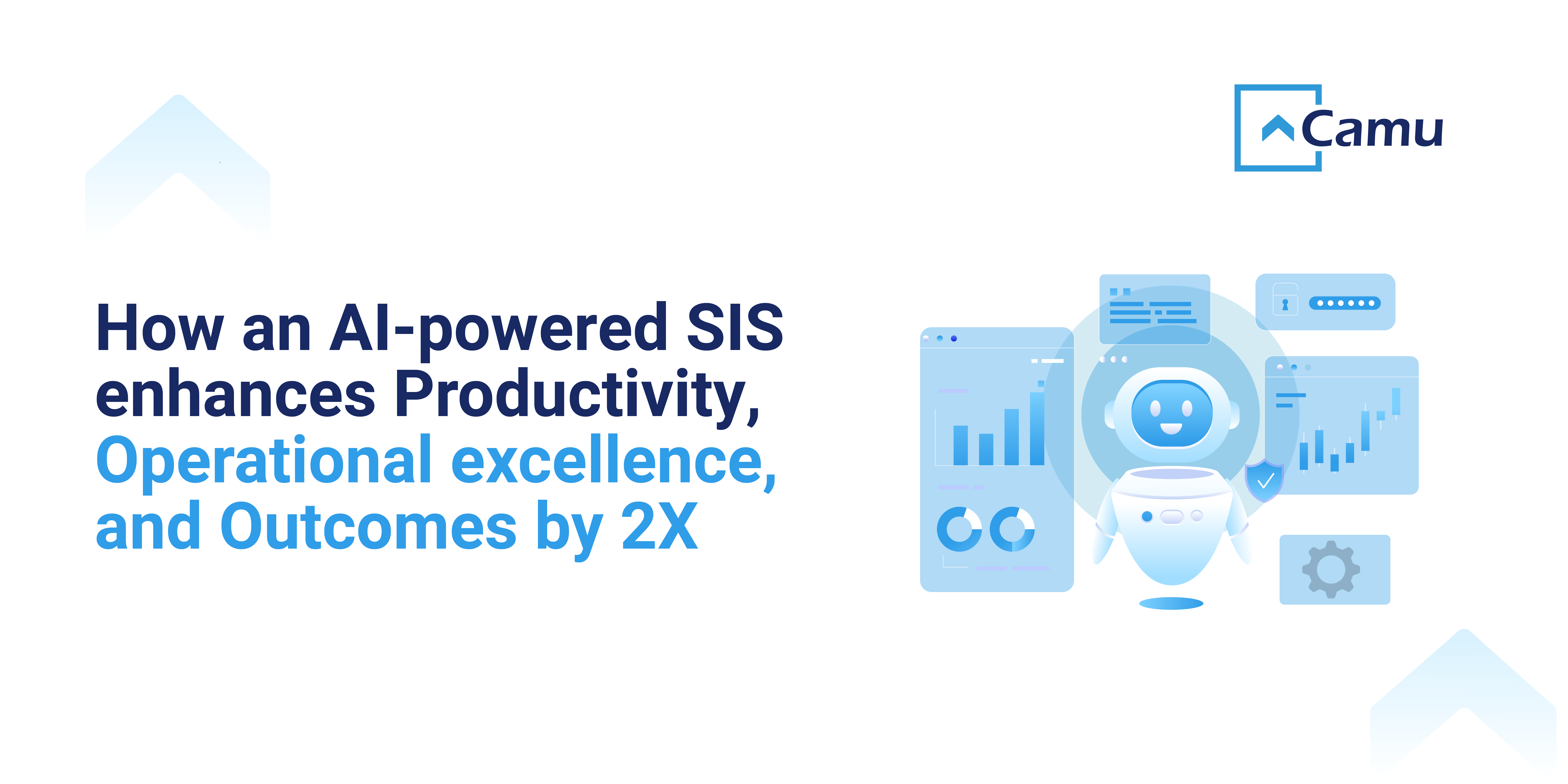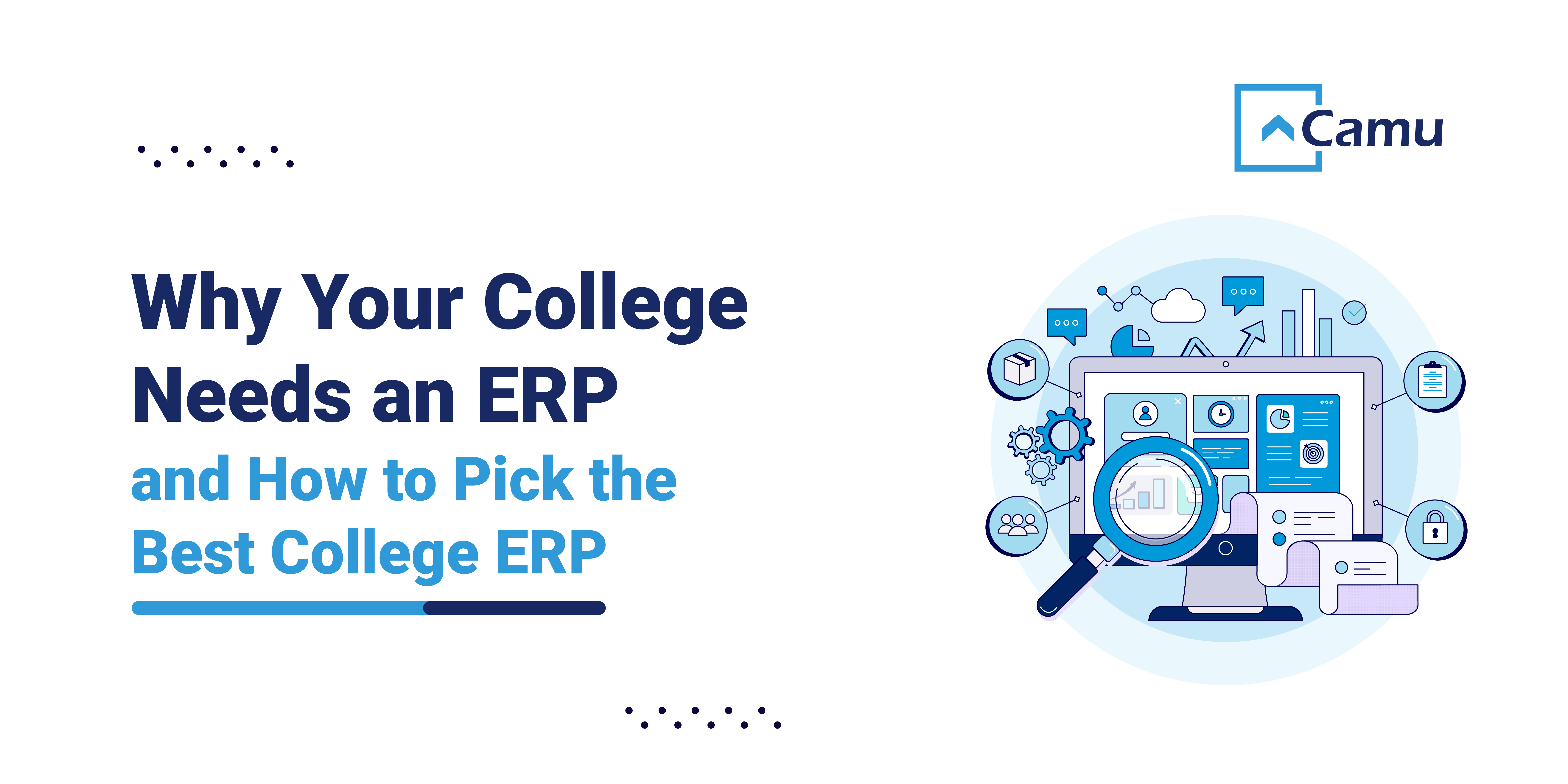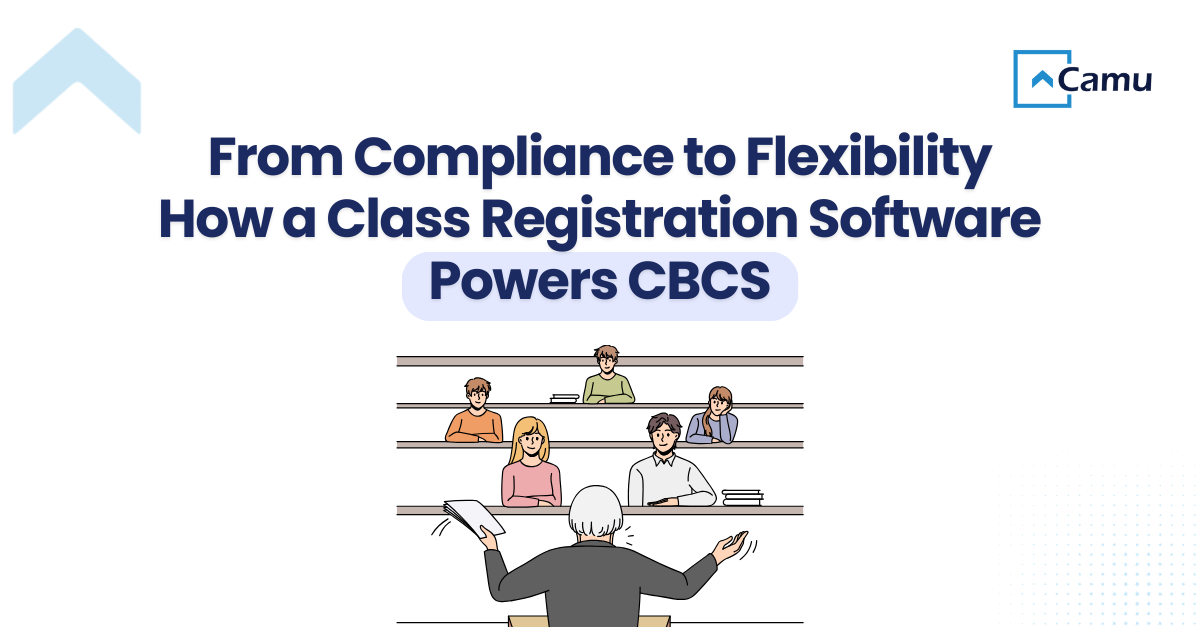Managing a university is very different from managing a college. The scale is much larger, and the administration is far more complex, since a university must oversee several affiliated colleges, while a college is usually a standalone institution. The programs are more diverse, too. Moreover, the reporting requirements are more demanding. A system designed for colleges often fails when applied to universities. This is why a University Management ERP is essential. It is not just about digitization. It is about handling complexity with accuracy and efficiency.
Why Universities Need a Dedicated ERP
Colleges can work with simpler systems. Universities cannot.
Scale: Universities have thousands of students spread across multiple campuses, departments, and faculties.
Diversity: Universities offer undergraduate, postgraduate, doctoral, and professional programs running side by side.
Compliance: Universities require mandatory reporting to NAAC, NIRF, UGC, AICTE, NBA, and more.
Integration: In a university, teaching, research, finance, and administration all need to connect seamlessly.
A simple college ERP will break under this pressure. A University ERP is built to thrive in it.
Key Features of a University Management ERP
Multi-Campus and Multi-Institute Management
Universities often operate across cities or states. A true ERP offers a centralised view with decentralised autonomy. Student records, faculty data, and administrative information remain unified.
Advanced Academic Management
CBCS, Outcome-Based Education, and progress tracking of research scholars: All of these require robust systems. A university ERP supports complex course structures, interdisciplinary registrations, and digital curriculum mapping.
Examinations and Evaluations
Universities conduct exams on a scale that colleges never face. Controllers of Examination perform many functions that demand automation. From scheduling to grading to degree generation, efficiency is critical. Maintaining academic integrity is also a top priority.
Student Lifecycle Management
Universities must support a student journey that spans admissions to alumni. This includes tracking of theses of research scholars, supervisor allocation, and built-in plagiarism checks.
Regulatory and Accreditation Reporting
Preparing NAAC or NIRF reports manually is a burden. An ERP designed for universities collects data from various modules and structures them automatically. This saves time and ensures accuracy.
Financial and Administrative Efficiency
Fee should be collected and aggregated across multiple campuses. Payroll for universities is also often more complex. Moreover, research grant management must also be handled. University ERPs streamline these processes.
Integration and Analytics
Universities need integrations with LMS, digital libraries, and research repositories. Analytics offer insights into performance, faculty workload, and resource use. Leaders should be able to get the data that they can trust.
Benefits of Implementing a University Management ERP
A university management ERP brings order to the scale and complexity of higher education. Administrative staff and academic faculty can complete their work quickly and efficiently. This frees them up to focus more on teaching and research. They can spend time on student support rather than paperwork.
Compliance becomes far easier to manage. Regulatory bodies such as NAAC, NIRF, UGC, and AICTE require detailed data across departments and campuses. University ERPs capture data and structure it at the source. This eliminates duplication and reduces errors. It allows institutions to respond to audits with confidence.
Universities also benefit from having a single source of truth. Student records, financial information, and faculty data are consolidated into one system. This helps improve transparency. It also helps leadership make decisions based on reliable information. Multi-campus institutions gain a unified view of their operations. Yet, each campus can function independently where needed.
For students and faculty, the campus experience improves significantly. Admissions, exam results, class schedules, and research tracking are all accessible online. These are also available through mobile apps. Faculty can manage their workload more effectively. Students receive prompt updates. They don't have to wait in long queues to get information.
Finally, decision-making becomes driven by data. Dashboards highlight performance trends and student outcomes. They also show resource utilisation and faculty workloads. Leaders can spot issues early and allocate resources wisely. They set strategic directions with evidence instead. They don't have to rely on intuition.
In short, a university management ERP strengthens every part of the institution. This includes all functions – academic, administrative, and financial. The ERP supports compliance. It also improves the student experience.
Why Camu is the Right Choice for Universities
Choosing the right ERP can determine whether a university thrives or struggles with digital management. Most ERPs in the market are built with colleges in mind. They handle basic functions well but fall short when tested against the complexity of a large university. Camu was designed from the ground up to support universities at scale.
Here’s how:
Built for CBCS and OBE
Many ERPs can only manage simple course registrations. Camu goes beyond. It is purpose-built to support a fully flexible Choice-Based Credit System (CBCS) and Outcome-Based Education (OBE). Universities can map learning outcomes, align assessments, and track competencies with ease.
Accreditation-Ready Reporting
If systems are not aligned, then preparing data for NAAC, NIRF, and UGC is time-consuming. With camu, the built-in reports are ready for submission. Data is collected from various modules automatically. It then gets structured and formatted as required. This reduces manual effort and improves accuracy.
Scalable for Multi-Campus Operations
Most systems struggle to perform when universities expand across cities or states. Camu is designed for scale. It provides a centralized system. At the same time, it offers the flexibility for each campus to operate autonomously. Leaders of the university can get a unified view across the entire institution.
Mobile-First, Cloud-Based
Students and faculty expect information on the go. Camu delivers a mobile-first experience with intuitive apps for them. There are also mobile apps for parents and administrators. Being cloud-based also eliminates the cost of on-premises infrastructure. It reduces the complexity of maintenance.
Proven with Large Universities
Camu is trusted by universities across India and abroad. Its success stories include institutions with tens of thousands of students. This track record proves its ability to handle size, diversity, and complexity.
Discover how Woxsen University partnered with camu to drive a complete digital transformation across academics, administration, exams, and student services.
Camu vs. Typical Other ERP Software
| Feature | Camu University ERP | Typical Other ERP |
| Support for CBCS & OBE | Fully integrated with program design, curriculum mapping, and assessment | Limited, often requires manual workarounds |
| Accreditation & Regulatory Reporting | Ready-made reports for NAAC, NIRF, UGC, AICTE, NBA | Generic reports, universities need extra staff effort |
| Multi-Campus Management | Centralised with autonomy for each campus | Single-campus focus, duplication of effort across campuses |
| Research & PhD Support | Thesis tracking, supervisor allocation, plagiarism check | Rarely included, handled outside ERP |
| Mobile Access | Native apps for students, faculty, and admin | Often web-only or basic mobile versions |
| Cloud Deployment | Cloud-based, reducing infra and maintenance costs | On-premise or hybrid, higher IT overhead |
| Scalability | Designed to handle tens of thousands of students | Performance issues beyond mid-sized institutions |
| Implementation | Education-focused team with a proven track record | Generic ERP vendors with limited domain expertise |
Conclusion
A college ERP cannot meet the demands of a university. The scale, diversity, and compliance needs are simply too high. If your ERP cannot handle multi-campus operations, it is not a University ERP. Camu is designed to bridge this gap. It gives universities the tools they need to grow, comply, and compete globally. Discover how camu can help your university achieve academic and administrative excellence.
Frequently Asked Questions
What is a University Management ERP?
It is an integrated software platform that manages academic, administrative, and financial operations of a university across multiple campuses and programs.
How is it different from a college ERP?
A university ERP is designed for scale and complexity. It supports multi-campus operations and diverse program structures. It also supports the functions of the Controller of Examinations. It provides facilities to easily manage accreditation reporting. It usually has features that a typical college ERP cannot handle.
Can a University ERP help with compliance?
Yes. It automates data collection from various modules. It generates ready-to-use reports for NAAC, NIRF, UGC, AICTE, and other accrediting or regulatory bodies.
How does a University ERP support CBCS?
It enables fully flexible course registration and credit transfers. It provides features to help the universities structure the program as required under the Choice-Based Credit System.
Does a University ERP support Outcome-Based Education (OBE)?
Yes. It allows curriculum mapping with program outcomes. It tracks student performance against learning outcomes. It greatly helps in continuous quality improvement.
How does it support the Controller of Examinations?
A university ERP streamlines exam scheduling and fair evaluation. It helps in the normalisation of grades and the publishing of results. It reduces manual errors and helps in safeguarding the integrity of examinations. It gives the Controller of Examinations a centralised system for managing large-scale examinations.
How does it improve student experience?
Students can access admissions, class schedules, results, and research progress online. They can also access them through mobile apps, making services faster and more transparent.
Is a cloud-based ERP better for universities?
Yes. Cloud-first ERPs reduce infrastructure costs, simplify updates, and allow access anytime, anywhere — essential for multi-campus universities.
How does it help university leadership?
It gives Vice Chancellors, Registrars, and Deans access to dashboards. They cover analytics for student outcomes, faculty workload, and institutional performance. Backed by such data, decisions can be made faster.
Can a University ERP integrate with existing systems?
Yes. Modern ERPs provide standards-based connectors. With these, it is easy to integrate with third-party finance systems, biometric systems, data visualisation tools, and other applications. Such integrations help in creating a unified digital ecosystem.





